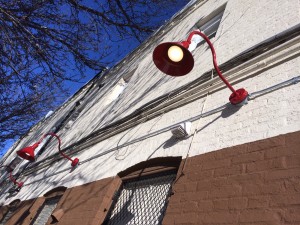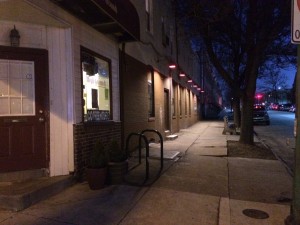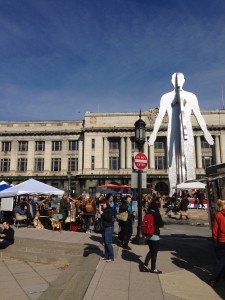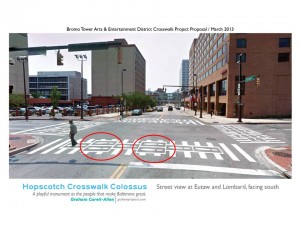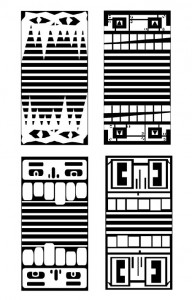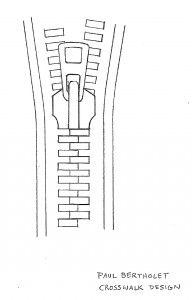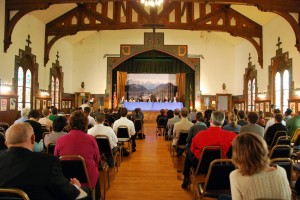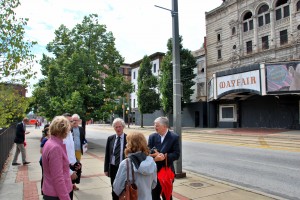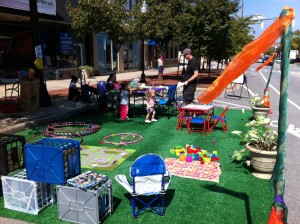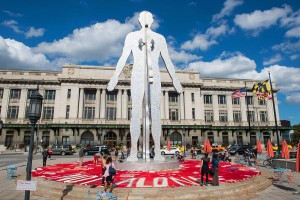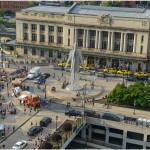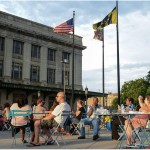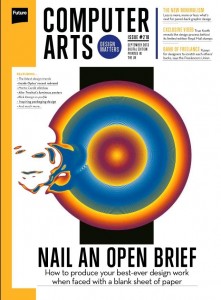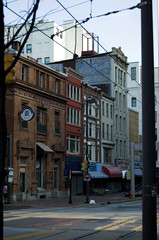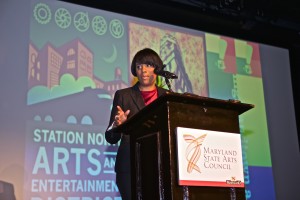The past month has been busy for our three Arts & Entertainment Districts. The Bromo Tower, Highlandtown, and Station North A&E Districts have selected their artists from Austria, Spain, and the United Kingdom for our 6-week long European Artists’ Residency this spring and summer. Bromo Tower selected the Social Design program team at the University of Applied Arts in Vienna (Austria) for their TRANSIT residencies. One professor, Barbara Holub (also of the Transparadiso group) and three students will be arriving this summer. Along with the Viennese design team, Bromo Tower is going to collaborate with a number of local arts groups, as well as merchants, social service providers, the University of Maryland and other stakeholders. Highlandtown has chosen the Spanish artist group mmmm…, and is currently discussing the timeline and project outline. Mmmm… intends to create a new, iconic bus shelter for the Highlandtown neighborhood. Highlandtown is also seeking an artist to partner with the Spanish artists. Jeremy Stern, Creative Alliance’s Exhibition Manager is currently in the process of selecting the best artist to assist them while they are in Baltimore. Station North has chosen The Urban Playground Team (UPG) from the United Kingdom for its European Artists’ Residency. The UPG Team will invite young people to play the Penn Station Plaza through a residency combining elements of functional architecture and design with Performance-Parkour, street dance, street based arts and sporting disciplines. Right now, Station North is working through the process of finding local fabricators, performance artists, and others who can work with UPG to transform Penn Station Plaza.
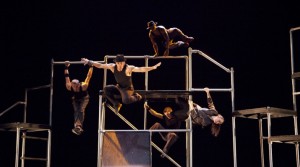
(Image: A Day in the Life Photographer: Matthew Andrews)
This coming spring is going to be full of opportunities for artists and the public to engage the plaza in Station North in play- and meaningful ways. Station North is looking forward to some thought provoking temporary installations and interactive performances. They are grateful for the cooperation and all the activities that are happening in the three A&E Districts, both directly connected to TRANSIT, as well as other programming and projects occurring within each neighborhood. The discussions have highlighted the strengths and assets of each district, as well as ways that they all can work together for the remainder of TRANSIT and in the future to overcome obstacles.
Bromo Tower received much positive press this month. The A&E District was not only featured in the February 2014 issue of Baltimore Magazine (not yet available online), but also in the AAA World magazine. The article by John Lewis in the Baltimore Magazine is entitled “Westside Bromide”, and features Jeff Daniel, President of Hippodrome Theatre as well as quotes from Vinny Lancisi, Artistic Director of Everyman Theatre, and Priya Bhayana, Director of the Bromo Tower A&E District. The AAA World magazine published a profile on the Bromo Tower District, entitled “A Towering Achievement Revitalized”. Bromo Tower also highlights the great opportunity of TRANSIT to better connect the three A&E Districts. They look forward to shaping further projects in ways that foster more collaboration and strengthen the city’s arts & cultural community as a whole.
And last but not least: Highlandtown. The Southeast CDC has announced that the owner of Baltimore’s “Alewife”, Bryan Palumbo, will be opening another restaurant in Highlandtown in first floor of the Southeast CDC headquarters. The new establishment will be a farm-to-table restaurant with a focus on microbrews located at 3323 Eastern Avenue (the corner of Eastern & Highland Aves). The Southeast CDC is working closing with the bank across the street to jazz up their parking lot, which will be used for restaurant parking. Using recommendations from residents and merchants for this area from a Placemaking workshop, Highlandtown is studying the design of a mural, signage and lighting to promote walkability and safety between the lot and the business. Check out the article here!
Moreover, Southeast CDC, Creative Alliance, and the Painted Screen Society are working together to install a 2-story painted screen in the East Avenue-facing window of the Creative Alliance. The screen will be designed and painted by Highlandtown artist Monica Broere. The largest of the window screens measures 7′ x 7′; with the entire design reaching over 23′ high! This painted screen faces the corner of High Grounds Coffee, which, through Placemaking efforts, is adding a seating area, mural, lighting and an improved facade. Additional projects will be happening through spring 2014, including permanent outdoor seating, completion of a new mural, and improved lighting to Conkling Plaza!
Highlandtown’s lesson learned this month is: If it’s broke, fix it! Within the first month of being installed, one of their 6 new goose-neck lights was damaged by ice. They immediately called the contractor and had it repaired. So always keep in mind to have a maintenance plan before adding permanent improvements!


